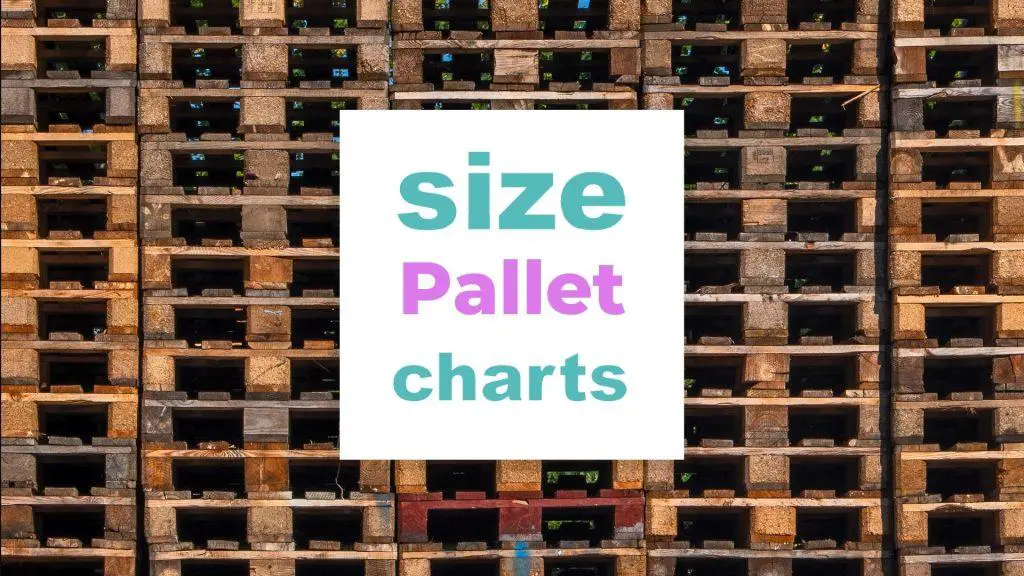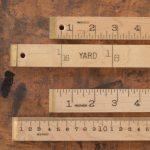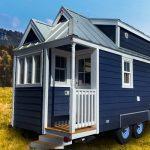Pallet Dimensions and Types by Industries in Inches & Centimeters
A pallet is a rigid, flat platform that carries a load. This structure stores, assembles, stacks, and transports goods in a stable form. Its first appearance was in the twentieth century. Its evolution has continued over the century, improving the supply chain efficiency by adding assistive features to the pallet design, increasing the pallet pool (skip straight to pallet dimensions).
A standard EURO pallet size is 80 cm (31.5″) wide,120 cm (47.25″) long and 14.5 cm (5.7″) high, refered to EURO 1
The transporter
Structures used to handle the pallets while being lifted are pallet jacks, forklifts, front loaders, and other jacking devices and the heavy loads are securely stacked by a shrink wrap, stretch wrap, adhesive and strapping. Important features to consider before purchase are the pallet’s materials, style, sizes, directions of entry, shipping destinations, and whether it’s reusable or expandable.

When constructing a warehouse, keep in mind the dimensions of the pallets you will keep. Standard pallet dimensions are of great importance because it will save on cost and the movement of inventory will be efficient.
To avoid wasting space in the warehouse and blocking inventory flow, the racking arrangements for storing the inventory should have the correct standard pallet sizes.
Related: U-Haul Truck Size: Choose the right sized moving truck, Storage Unit Size Chart – Guide To Comparing Spaces, Shipping Container Dimensions explained (with container size charts)
Summary of Pallet Dimensions and Types
Pallet Sizes and Dimensions
USA Pallet Sizes
The table below shows the pallet sizes for the United States matching them with the industries involved:
| Pallet dimensions in inches | Pallet dimensions in millimeters | Production rank | Industries that use them |
| 40 * 48 inches | 1016 * 1219 millimeters | 1 | Grocery, many others |
| 42 * 42 inches | 1067 * 1067 millimeters | 2 | Paint and telecommunications |
| 48 * 48 inches | 1219 * 1219 millimeters | 3 | Drums |
| 48 * 40 inches | 1219 * 1016 millimeters | 4 | Cement, military |
| 48 * 42 inches | 1219 * 1067 millimeters | 5 | Beverage, chemical |
| 40 * 40 inches | 1016 * 1016 millimeters | 6 | Dairy |
| 48 * 45 inches | 1219 * 1143 millimeters | 7 | Automotive |
| 44 * 44 inches | 1118 * 1118 millimeters | 8 | chemical, drums |
| 36 * 36 inches | 914 * 914 millimeters | 9 | Beverage |
| 48 * 36 inches | 1219 * 914 millimeters | 10 | Shingles, beverages and packaged paper |
| 35 * 45.5 inches | 889 * 1156 millimeters | Unknown | Military ½ ISO container fits 36 inches standard doors |
| 88 * 108 inches | 2240 * 2740 millimeters | Unknown | Air cargo for the military |
| 48 * 20 inches | 1219 *508 millimeters | Unknown | Retail |
EURO Pallet Sizes
The table below shows the standard pallet sizes used by various European countries:
| EURO pallet type | Pallet dimensions in inches and millimeters according to(length*width*diameter) | ISO pallet alternative | Pallet weight in kilograms and pounds | Load weight in kilograms and pounds |
| EUR EUR 1 | 31.50 * 47.24 * 5.71 inches 800 * 1200 * 145 millimeters | ISO1 | 20 – 25 kilograms 44.09 – 55.11 pounds | 2490 kilograms 5489.51 pounds |
| EUR 2 | 47.24 * 39.37 * 5.67 inches 1200 * 1000 * 144 millimeters | ISO2 | 33 kilograms 72.75 pounds | 1470 kilograms 3240.79 pounds |
| EUR 3 | 39.37 * 47.24 * 5.67 inches 1000 * 1200 * 144 millimeters | – | 29 kilograms 63.93 pounds | 1920 kilograms 4232.87 pounds |
| EUR 6 | 31.50 * 23.62 * 5.67 inches 800 * 600 * 144 millimeters | ISO0, it’s half the size of EUR | 9.5 kilograms 20.94 pounds | 500 kilograms 1102.31 |
| 23.62 * 15.75 inches 600 * 400 millimeters | Quarter the size of EUR | – | – | |
| 15.75 * 11.81 inches 400 * 300 millimeters | An eighth of the size of EUR | – | – |
ISO Pallet sizes
The table below shows the ISO standard dimensions of pallets in each region:
| Pallet sizing (width and length) in millimeters | Pallet sizing (width and length) in inches | Wasted floor ISO container | The popularity of pallets in each region |
| 1016 * 1219 millimeters | 40.0 * 48.0 inches | 3.7%(40 feet ISO fits 20 pallets) | North America |
| 1000 * 1200 millimeters | 39.4 * 47.2 inches | 6.7% | Asia, Europe; similar to 40 * 48 inches has the same footprint as the EUR 3 pallet. |
| 1165 * 1165 millimeters | 45.9 * 45.9 inches | 8.1% | Australia |
| 1067 * 1067 millimeters | 42.0 * 42.0 inches | 11.5% | North America, Asia, Europe |
| 1100 * 1100 millimeters | 43.3 * 43.3 inches | 14% | Asia |
| 800 * 1200 millimeters | 31.5 * 47.2 inches | 15.2% | Europe; same footprint as EUR 1 pallet and it fits many doorways. |
How to Choose the Right Pallet Size For You
Pallet manufacturers created pallets from different materials that are categorized into various dimensions and styles. The following are examples of the materials used;
- Wood pallets – are common pallets that are cost-effective, durable, and have great weight capacities. Wooden pallets are reusable because they have broad pallets and common pallet sizes are made from timber elements.
- Plastic pallet – created from recycled plastic materials and divided into 3 parts; rackable pallets offer a 4-way entry of inventory. nestable pallets, good for export and domestic use. Stackable pallets are recycled pallets that carry heavy loads. It’s best for the paper, pharmaceutical, and beverage industries.
- Paper pallets are made from laminated paperboard or partial wood decks and can carry the heavy load capacity due to their lightweight capacity.
- Metal/Aluminum pallets – also known as steel pallets are long-lasting and maintain their structural foundation. Best suited for the chemical industry because they are easy to clean.
Plastic Vs. Wooden pallets comparison (video)
FAQ on Pallet dimensions and sizes
What is the standard size for a pallet?
A pallet measurement has the first number as a stronger length and the second as the length of the deck board. Wooden pallets have 3 or 4 stringers holding multiple deck boards for placing the goods on the top.
The standard size for a North American pallet made of wood standardized by GMA (Grocery Manufacturers of America is now referred to as Consumer Brand Association CBA) is 48 inches(122 centimeters) * 40 inches (102 centimeters) with a load capacity of 3 tonnes (3000 kilograms) and a dynamic capacity of 33 lbs(15 kilograms) to 48 lbs(22 kilograms).
Other common pallet dimensions are 48 inches(122 centimeters) * 48 inches(122 centimeters) and 42 inches(107 centimeters) * 42 inches(107 centimeters).
What are the standards for pallet dimensions?
There aren’t definitive standards for dimensions of pallets globally but different sized pallets exist and are utilized worldwide. International standards differ depending on the region pallet users are from.
ISO standards allow six pallet dimensions for 4 continents( Europe, North America, Asia, and Australia) while the European pallet has a system that allows the exchange of pallets. The EURO pallets which are four-way pallets are made of wood and their dimensions are 47.2 inches(1200 millimeters) * 31.5 inches(800 millimeters) * and 5.7 inches(144 millimeters).
In addition, the Australian pallet has a unique size that is mostly used by their region, unlike other regions. Made of hardwood the square pallet has a measurement of 45.87 inches(1165 millimeters) * 45.87 inches(1165 millimeters) unfortunately, it does not suit the ISO shipping containers but its a perfect fit for the RACE container transported by the Australian railway.
More About Different Pallet dimensions explained (video)
Conclusion
The dimensional standard of pallets influences pallet shipping but also uses all the trailer space, handling, and care for the goods. Although custom pallets are used standard pallet sizes are the main sizes used in the shipping industry.
They construct popular pallets associated with shipping like the stringer pallets with either plastic or wood stringers that have both 2-way pallets and 4-way pallets. In contrast, both the parallel and perpendicular stringers create the block pallets.
While other organizations aim for standards of pallet dimensions, material design, testing, and performance procedures, some dwell on the production process of quality pallets for particular industries like the grocery industry, the telecommunications industry, the dairy industry, the automotive industry, and many more.
In conclusion, depending on the requirements of your business one can choose the correct pallet type and size, the material of the pallet, cost of shipment, and storage. With the above factors, one can choose the right pallet dimension.
If you enjoyed reading this article, please don’t hesitate to leave a comment below!
Picture in this post by Wade Austin Ellis on Unsplash
Related to Pallet Dimensions
- Barbie Doll Size : What are different sizes of Barbie ?
- Blanket sizes chart : blanket sizes and dimensions in inches & cm
- Tablecloth size chart – What are standard tablecloth sizes ?
- How Many Meters Are In A Yard?
- How Many Centimeters are 8 Inches?
- Knife Sizes and Different Types
- 4 Inches is How Many Centimeters?
- Light Bulb Base Sizes : What size light bulb base do I need?
- Tesalate Towel Size Guide
- Light bulb Size : What are the different and standard bulb sizes?
- Duvet Sizes: What is a Standard-Size Duvet?
- Single Car Garage Size and Dimensions
- How High Is A Story?
- How Much Does 1 Cup Of Rice Weigh?
- Cast Iron Skillet Sizes: What Size Do I Need?
- Dollar Bills Size Chart
- Pizza Sizes: Which One to Order?
- How To Measure A Foot Without A Ruler
- Wine Glass Size Chart
- Tiny Houses Size Charts
- How Many Inches Are In 20 Centimeters?
- How To Measure 1 Meter Without A Ruler?
- Nightstand Size and Dimensions for Bedroom























